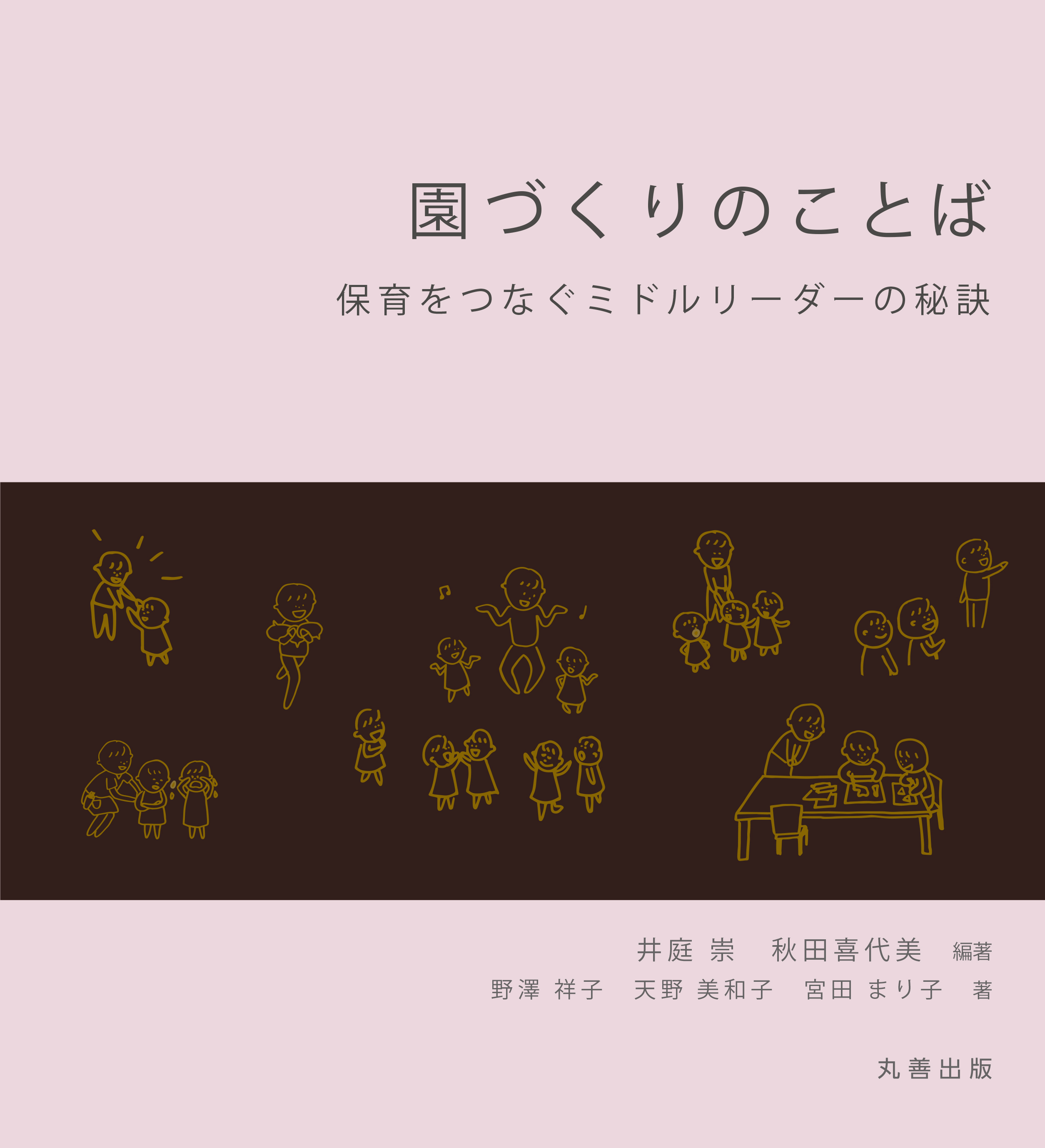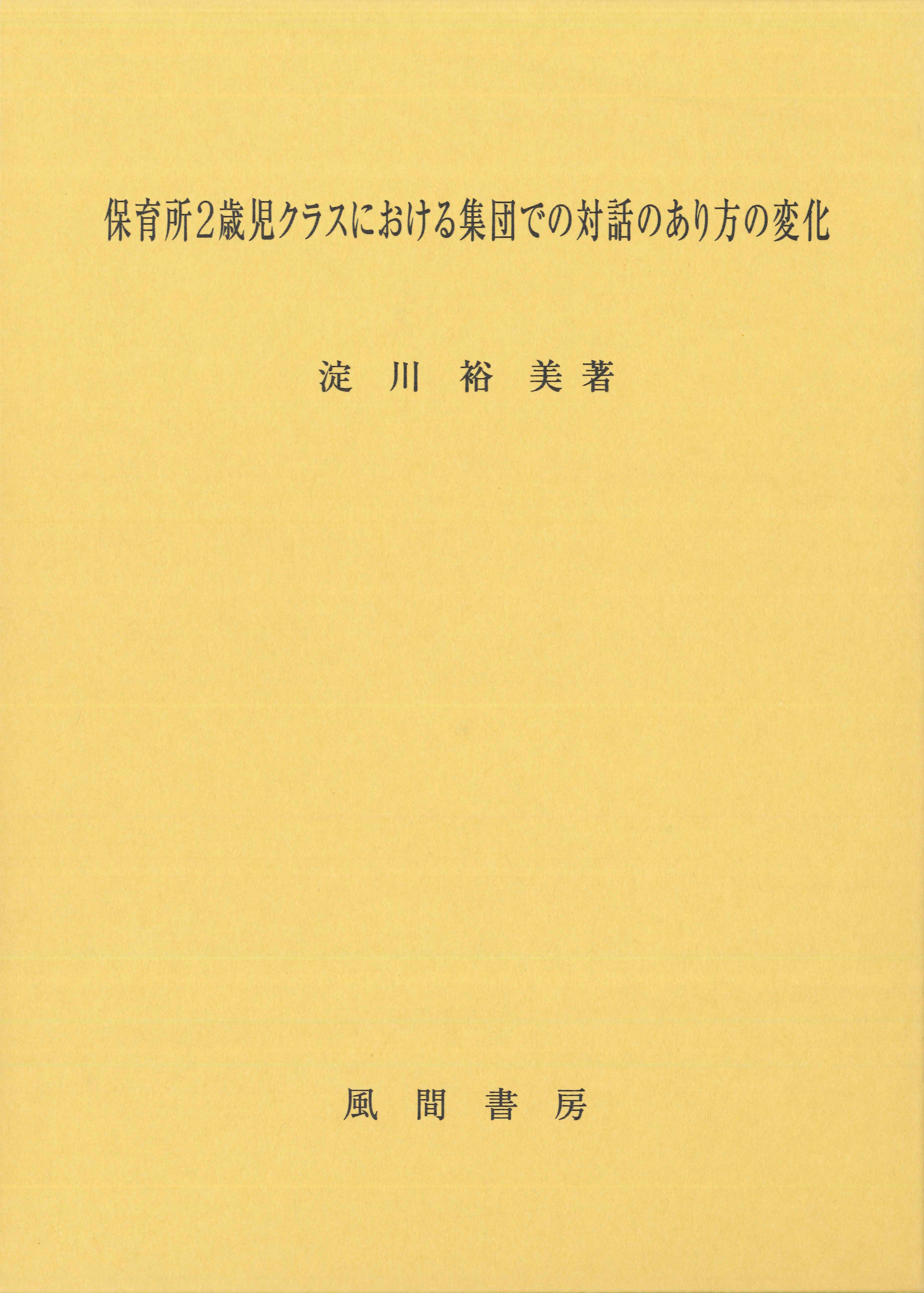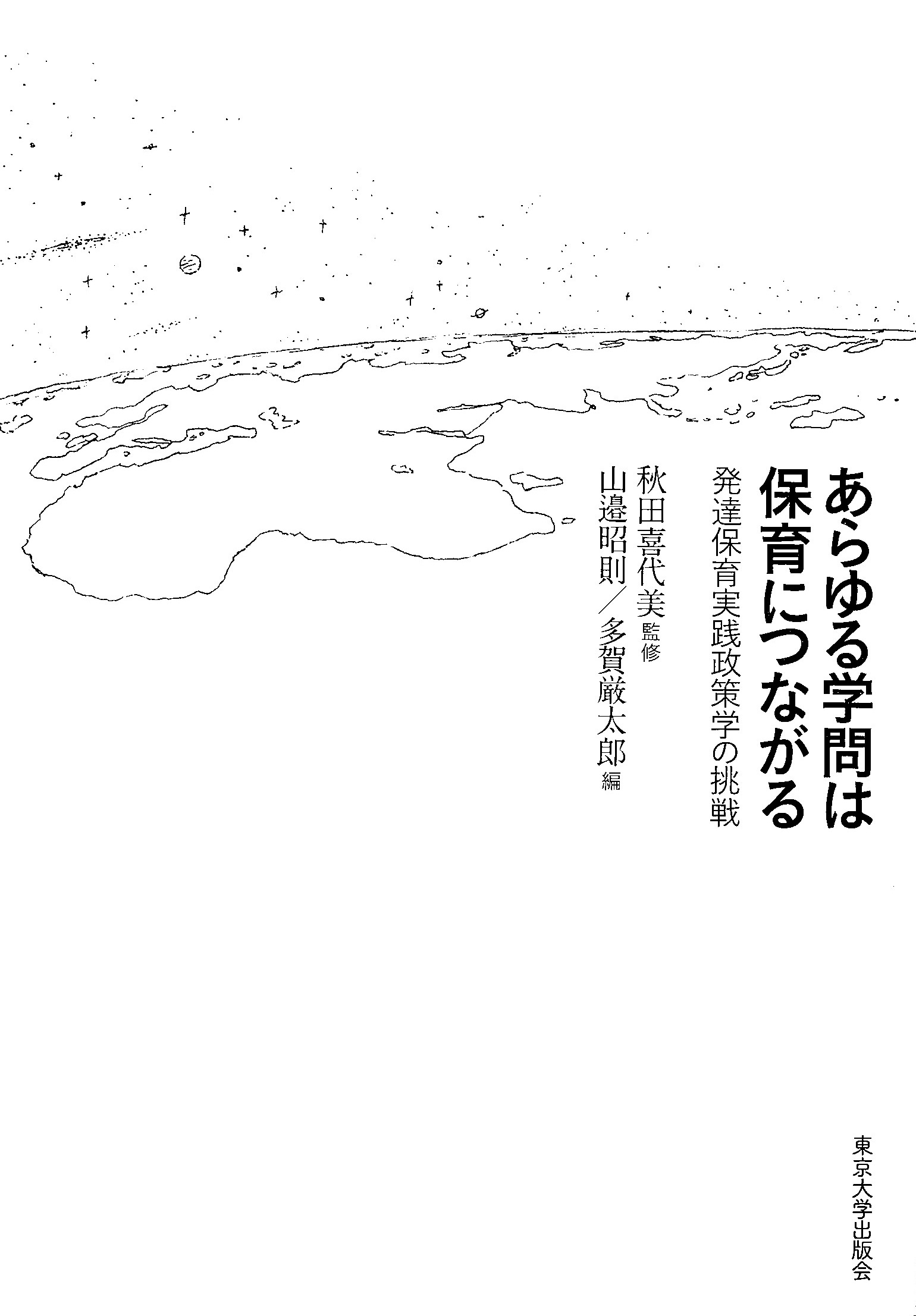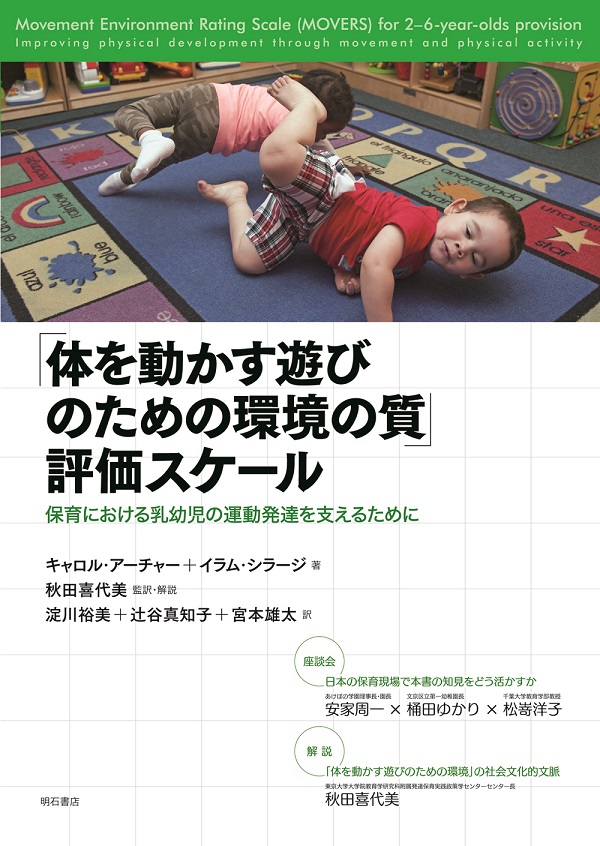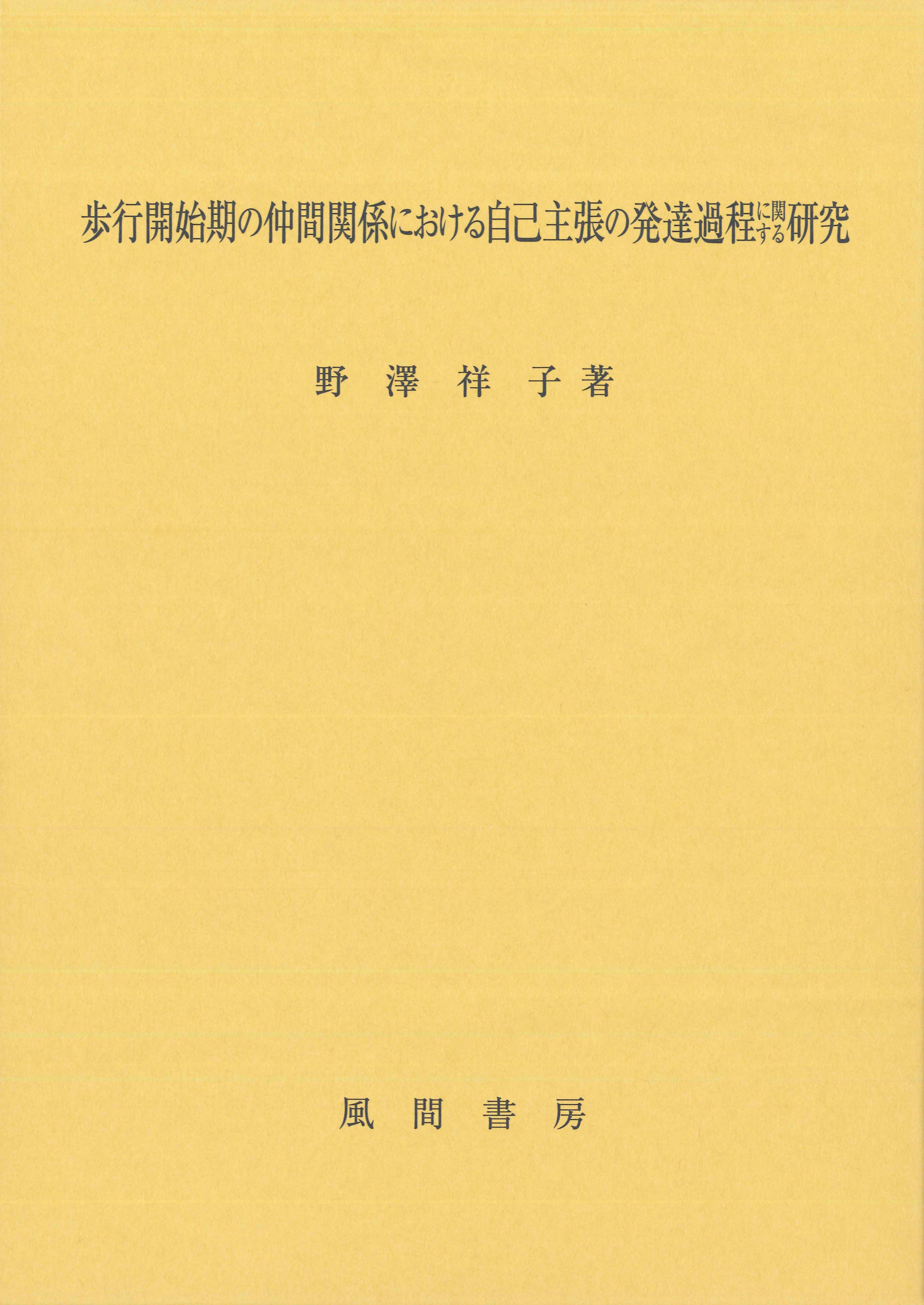
Title
Hoko-Kaishiki no Nakama Kankei ni okeru Jiko Shicho no Hattatsu-Katei ni kansuru Kenkyu (A Study on the Developmental Process of Self-Assertion in Peer Relationships in the Toddler Period)
Size
192 pages, A5 format
Language
Japanese
Released
February 10, 2017
ISBN
978-4-7599-2166-3
Published by
Kazamashobo
Book Info
See Book Availability at Library
Hoko-Kaishiki no Nakama Kankei ni okeru Jiko Shicho no Hattatsu-Katei ni kansuru Kenkyu
Japanese Page
In peer relationships, especially among children, situations sometimes emerge in which there is a clash between the demands of oneself and of others. It is considered that conveying one’s intentions and demands clearly in such conflicting situations is important in order to have social engagement with others independently.
The interesting fact is that in the toddler period (1–2 years of age), which is the period when peer relations take root, significant changes in the ways in which self-assertion is displayed to other children can already be observed. From the latter half of the first year to the first half of the second year in a child’s life, the behavior of asserting one’s demands is frequently displayed. Over the latter half of the second year, children communicate their demands in language and the behavior of adjusting the demands of oneself and of others can be seen gradually. Through what process do these changes occur?
The purpose of this book is to identify the details of the developmental process of self-assertion behavior in peer relationships in the toddler period by analyzing short-term longitudinal observation data over a period of about one year, in a class of one-year-old children in a day care center. The analysis refers to the “relational–historical approach” of Fogel et al. This approach considers the interactions and relationships with others to be a dynamic system and attempts to ascertain elaborately the process of development based on a microscopic analysis of data obtained from frequent observations. In this book, the interactions, including the self-assertions, are considered a dynamic system and the process of change is examined. Using this approach, the aim is not to examine developmental changes from the average values of the whole group, as in conventional research, but to depict the developmental trajectory of each child and to extract developmental patterns from the similarities of these trajectories. In addition, the purpose is to find out what triggers the developmental changes, based on a microscopic analysis.
The results of the analysis suggest that the pattern of assertive interactions experienced by each child changes, from the latter half of the first year to the age of two years, from the interactions that consist of mutual expression of unpleasant emotions to language-based communication. This suggests the possibility that expressing interest in other children’s intentions through language in the latter half of the second year may be the impetus for that change. Further, it was found that these changes were linked to the development of the relationship that enables them to play together with other children, based on trust with the caregiver.
The toddler period is gathering attention because it is developmentally significant, being a transitional period from infancy to early childhood, but there is little research on this period compared to the period of infancy and childhood (from three years onwards). Therefore, there is a strong need for the development of such research. The following points indicate the significance of this book. First, this book focuses on peer relationships in the toddler period, on which there is not much research, and examines the process of development in detail, hence, making it academically significant. Second, it provides suggestions for day care practices based on the analysis of observations in the day care center. In recent years, the need for day care for children of less than three years old has been on the rise and examining what constitutes ideal day care is an urgent challenge. This book considers the process of development of peer relationships among children aged 1–2 years of age in day care centers, along with the role of the caregivers who provide support. It is hoped that it will be useful material for the examination of day care for children less than three years of age.
(Written by NOZAWA Sachiko, Associate Professor, Graduate School of Education / 2018)



 Find a book
Find a book


